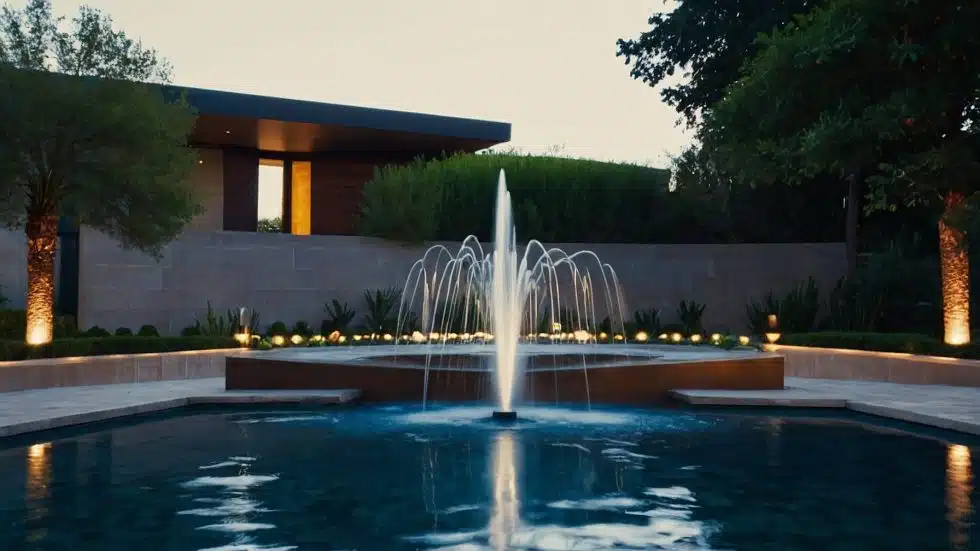How Lawn Turf Helps Save Water
For homeowners in Orange County, California, maintaining a beautiful landscape while conserving water can be a challenging balance. With the region’s periodic drought conditions and water restrictions, understanding how lawn turf can actually help save water is essential for sustainable yard management.
Lawn turf has evolved significantly in recent years, with numerous options now available that require significantly less water than traditional varieties. These water-efficient turf options are revolutionizing how Orange County residents approach both front yard and backyard renovations.
Get Free Estimate
Fill the form & we will call back!
Types of Water-Conserving Lawn Turf for Orange County Homes
Several turf varieties excel at water conservation while maintaining aesthetic appeal:
- Bermuda Grass: Offers excellent drought tolerance once established and recovers well after periods of water restriction.
- Buffalo Grass: A native North American grass requiring minimal irrigation after establishment.
- Zoysia Grass: Features excellent heat and drought tolerance with a lush appearance.
- Fescue Blends: Particularly tall fescue varieties can maintain their color with less water than traditional options.
- Artificial Turf: While not a living option, modern artificial turf provides water conservation benefits without sacrificing appearance.
When choosing the right lawn turf for water conservation purposes, consider your specific yard conditions including sun exposure, soil quality, and usage patterns.
Benefits of Water-Efficient Lawn Turf Installation
Implementing water-efficient lawn turf in your Orange County property offers numerous advantages:
Environmental Benefits
Properly selected and installed lawn turf supports water conservation through:
- Reduced runoff compared to hardscaped areas
- Natural cooling effects for the surrounding property
- Oxygen production and carbon sequestration
- Filtration of airborne pollutants
Financial Advantages
The lawn turf water conservation approach delivers tangible savings:
- Lower water bills throughout Orange County’s warm seasons
- Reduced maintenance costs over time
- Potential rebates from local water authorities for drought-tolerant landscaping
- Increased property value from sustainable landscaping
Practical Benefits for Homeowners
Beyond conservation, efficient lawn turf provides:
- More resilient landscaping during water restrictions
- Reduced mowing frequency
- Fewer issues with pests and diseases
- Better performance during Orange County’s hottest months

Installation Best Practices for Water-Conserving Lawn Turf
Proper installation is crucial for maximizing the water conservation benefits of your new lawn turf:
Soil Preparation
Before installing any lawn turf with water conservation in mind:
- Test soil composition and amend as needed
- Remove existing vegetation completely
- Till to a depth of 4-6 inches
- Add organic matter to improve water retention capabilities
- Level the area while creating slight slopes for drainage
Irrigation Systems for Maximum Efficiency
Installing the right irrigation alongside your lawn turf water conservation project:
- Consider drip irrigation for borders and non-turf areas
- Use smart controllers that adjust based on weather conditions
- Install rain sensors to prevent unnecessary watering
- Set up appropriate zones based on plant water needs
- Schedule watering for early morning to minimize evaporation
Professional vs. DIY Installation
While many Orange County homeowners tackle lawn renovation themselves, professional installation offers advantages for water conservation:
- Proper grading to prevent runoff
- Expert selection of appropriate turf varieties
- Efficient irrigation setup
- Knowledge of local water regulations
- Long-term maintenance guidance

Maintenance Strategies for Water-Efficient Lawn Turf
Proper maintenance is essential to retain the water conservation benefits of your lawn turf:
Watering Techniques
Optimize your watering approach:
- Water deeply but infrequently to encourage deeper root growth
- Adjust seasonal watering schedules as weather changes
- Water in early morning (before 8 am) to reduce evaporation
- Consider using graywater systems where permitted
Mowing Practices for Water Conservation
Proper mowing significantly impacts lawn turf water conservation:
- Keep grass at the higher end of the recommended height for your variety
- Never remove more than 1/3 of the blade length when mowing
- Keep mower blades sharp for clean cuts that heal quickly
- Consider leaving clippings as mulch to retain soil moisture
Seasonal Adjustments for Orange County Climate
Adapt your lawn turf water conservation strategy throughout the year:
- Reduce watering in winter months when evaporation rates are lower
- Monitor soil moisture rather than following a rigid schedule
- Apply appropriate fertilizers sparingly and at optimal times
- Overseed with drought-resistant varieties in fall for cooler months

Lawn Turf Water Conservation During Drought Conditions
During severe water restrictions, which Orange County periodically experiences:
Drought Survival Techniques
Help your lawn turf survive while maintaining water conservation:
- Apply water strategically to high-visibility areas if restrictions allow
- Use targeted hand-watering for stressed areas
- Apply authorized wetting agents to improve water penetration
- Consider temporary dormancy as a natural survival mechanism
Recovery After Drought
When water becomes more available:
- Gradually increase watering to prevent shocking dormant grass
- Apply light fertilization to support recovery
- Overseed bare patches with drought-resistant varieties
- Aerate compacted soil to improve water penetration
Comparing Lawn Turf Water Conservation to Alternative Landscaping
Understanding how turf compares to other landscaping options helps Orange County homeowners make informed decisions:
Turf vs. Xeriscaping
While both prioritize water conservation:
- Quality lawn turf provides usable recreational space
- Turf offers immediate erosion control
- Xeriscaping may require less ongoing maintenance
- Combined approaches often yield the best results
Turf vs. Hardscaping
Consider these comparisons for your renovation project:
- Turf prevents heat-island effect that concrete creates
- Hardscaping eliminates water needs but increases runoff
- Lawn turf provides natural cooling for your property
- Balanced approaches with some turf and some hardscaping often work best

Technology Innovations in Lawn Turf Water Conservation
The landscape industry continues to develop new technologies that enhance water efficiency:
Smart Irrigation Advancements
Modern systems support lawn turf water conservation through:
- Weather-based controllers that adjust automatically
- Soil moisture sensors that prevent overwatering
- Flow sensors that detect leaks or broken sprinklers
- Mobile apps for remote monitoring and adjustment
Turf Breeding Developments
Science continues to improve water conservation potential:
- New hybrid varieties with enhanced drought tolerance
- Deeper-rooting cultivars that access subsurface moisture
- Slower-growing varieties that require less frequent mowing
- Disease-resistant options that thrive with less chemical intervention
Case Studies: Successful Lawn Turf Water Conservation in Orange County
Local examples demonstrate the real-world benefits:
Residential Success Stories
Orange County homeowners have achieved remarkable results:
- A Tustin family reduced water usage by 40% after installing drought-tolerant fescue
- An Irvine homeowner combined partial turf replacement with efficient irrigation to cut water bills by 35%
- A Mission Viejo property maintained a green lawn through water restrictions using best practices
Community-Wide Initiatives
Broader Orange County projects showcase lawn turf water conservation:
- Homeowners’ associations implementing turf conversion programs
- Municipal parks demonstrating effective turf management techniques
- Demonstration gardens showing the aesthetic potential of water-wise lawns

Getting Started with Your Lawn Turf Water Conservation Project
For Orange County homeowners planning front yard or backyard renovations:
Assessment and Planning
Begin with thorough evaluation:
- Analyze your current water usage patterns
- Identify problem areas in existing landscaping
- Consider family needs and how the space will be used
- Research local rebate programs for water-efficient landscaping
- Establish a realistic budget and timeline
Finding the Right Professional Help
When seeking assistance:
- Look for contractors with specific lawn turf water conservation expertise
- Check references and previous water-efficient installations
- Ensure they’re familiar with Orange County water regulations
- Verify they offer ongoing maintenance support
- Confirm they can help with any available rebate documentation

Conclusion: The Future of Lawn Turf Water Conservation
As Orange County continues to face water challenges, lawn turf will play an increasingly important role in sustainable landscaping. By selecting appropriate varieties, installing them correctly, and maintaining them properly, homeowners can enjoy beautiful, functional outdoor spaces while contributing to community-wide water conservation efforts.
With advancing technology and growing awareness, lawn turf water conservation techniques will continue to improve, offering even greater efficiency for future landscape renovations. For Orange County homeowners looking to balance aesthetics, functionality, and sustainability, water-efficient lawn turf represents an excellent investment in both property value and environmental responsibility.
By implementing the strategies outlined in this guide, you can create a beautiful, water-efficient landscape that remains resilient through Southern California’s climate challenges while reducing your environmental footprint and water bills.

